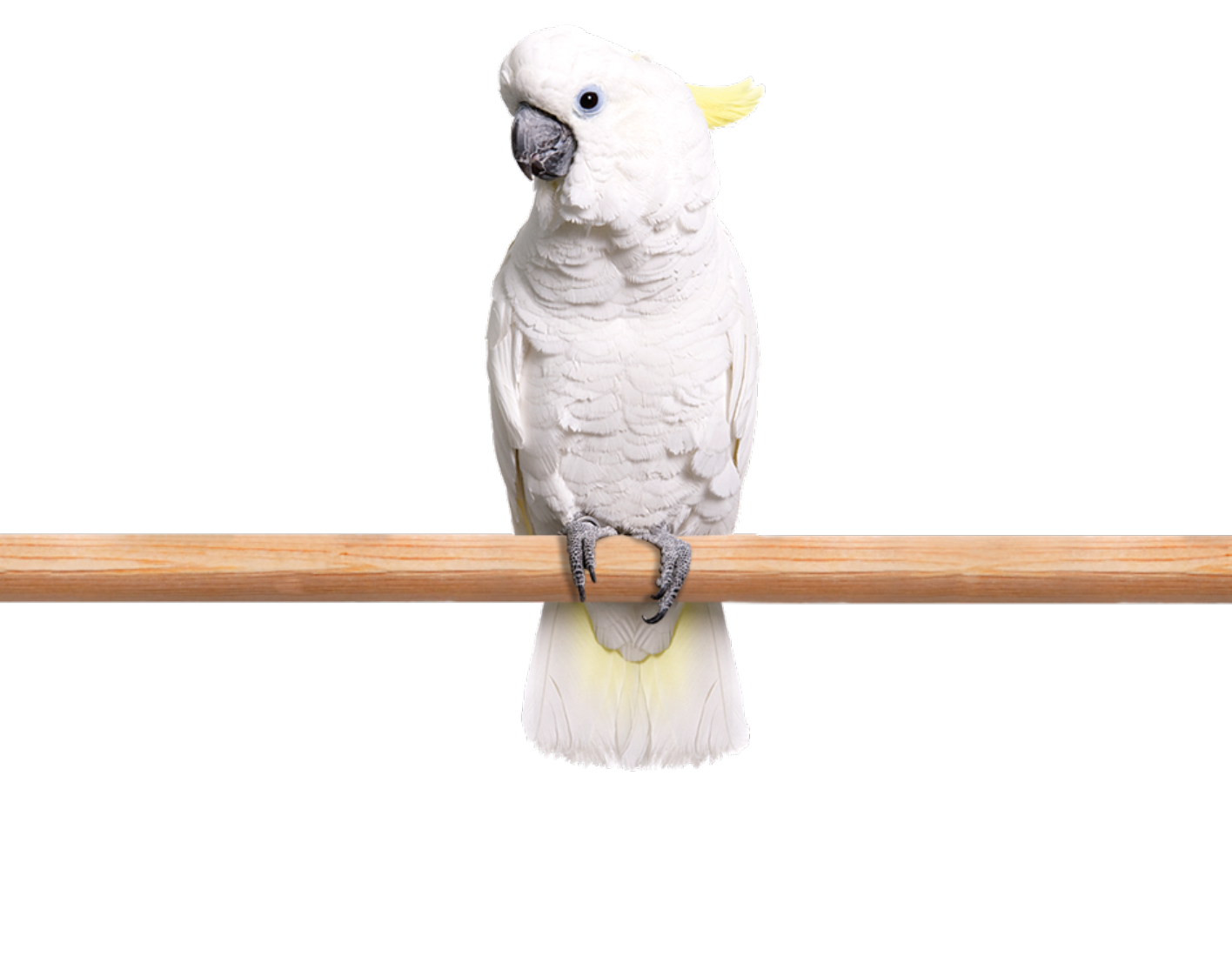Cockatoo

Scientific Name: Cacatua
Distribution: Indonesia, New Guinea, Australia
Weight: 300-1100 g
Size: 13 - 20 inches in length
Distinct Markings: Cockatoos are recognized by their colors, generally white, pink or black. They all have crests which may be recumbent (lie down on back of head when not erect) or recurved (curl upward in back). Cockatoos are medium to large sized parrots. They have patches of down feathers on their flanks which produce powder (powder down) which help to keep their plumage soft and clean.
Cockatoos are affectionate and highly intelligent birds. Cockatoos are excellent companion birds for those who want a charming, loving bird which likes to cuddle. Cockatoos can be very demanding of attention and if they are deprived of attention can become very noisy and destructive or turn to plucking or self mutilation behavior. Imprinted cockatoos may become possessive of their owners which can lead to unpredictable or aggressive behavior towards other people.
DIET: Cockatoos should be fed a formulated (pelleted or extruded diet) as a basis for good nutrition. The diet should be supplemented with fresh fruits and vegetables daily to add variety and psychological enrichment. Treats maybe given in small amounts especially as rewards for good behavior.
Some species of cockatoos are very efficient in utilizing calories. If overfed they may become obese especially when handrearing. Juvenile cockatoos are notoriously picky eaters and don’t seem to need much food to maintain themselves. Try to ensure that the food that they do eat is nutritious. Some cockatoos, such palm cockatoos need large quantities and higher fat foods. Rosebrested cockatoos have a tendency toward obesity and may need caloric restriction to maintain optimum weight.
